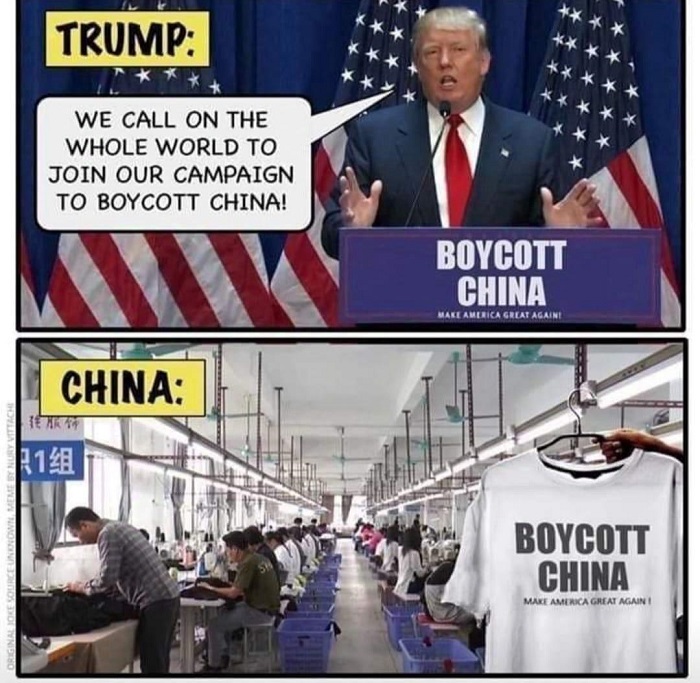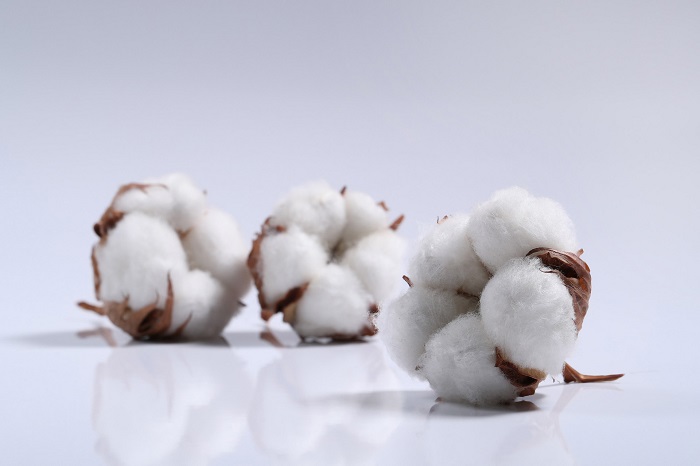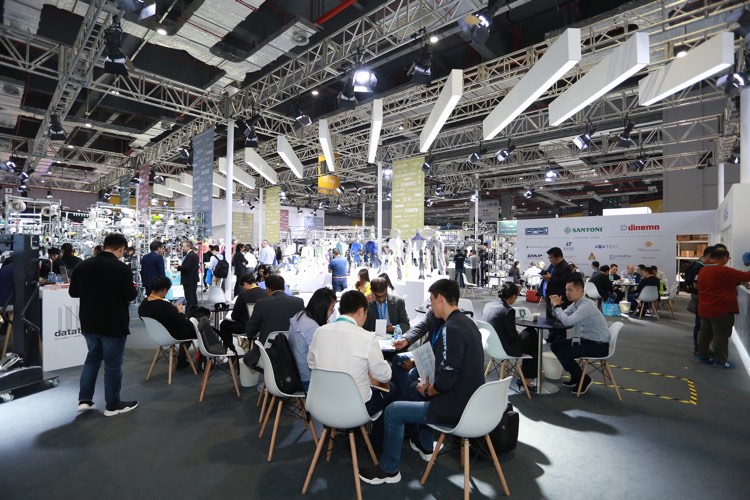FW
All Pakistan Textile Mills Association (APTMA) Punjab Chairman SM Tanveer has demanded that the Pakistani government should announce a stimulus plan to revive the ailing textile industry in the region. It wants a boost to employment and investments in the segment.
The APTMA has pointed out that due to lack of support the industry is increasingly becoming less competitive domestically and internationally. He said that there is a dire need for proper encouragement for development of the sector.
Tanveer points out, although energy projects envisioned by the Chief Minister of Punjab Shahbaz Sharif can be beneficial for the sector, they are long-term plans, and the Punjab textile industry requires immediate relief. The APTMA Punjab Chief added that due to severe load shedding losses of the textile industry are unbearable and the cost of production has increased manifold as compared to the competitors in the region. The viability of the industry will be totally eroded if the government fails to resolve energy-related issues.
He also informed that due to load shedding and shortage of gas supply as well as rising production costs, during last few months, about 375,000 spindles have stopped operation in Lahore and Faisalabad, some 312,000 in Multan and 158,000 in Rawalpindi. Production of more than 100 spinning mills have also been reduced in Punjab as the industry is operating only in one shift.
The Alliance for Bangladesh Worker Safety has surveyed 508 readymade garment units. The survey result shows that 99 per cent of the factories are structurally sound. Less than one per cent of the units surveyed were found to be unsafe in terms of structural integrity.In instances where the buildings are identified as overloaded, factory owners have been urged to take immediate action to reduce the load and reinforce the buildings' columns. Common issues include inadequate fire suppression equipment, lack of fire doors and poor electrical wiring.
Workers who are unable to work due to factory closures are being compensated in part by the Alliance's Worker Support Fund, which is made up of dues from each of the Alliance's 26 member companies. Nearly 1,000 workers’ salaries have been paid following Alliance-recommended factory closures to date.
The Alliance has reiterated its commitment to inspect 100 per cent factories by July 2014. Before they are released, inspection reports are shared with factory management and worker representatives. The goal is to ensure that inspection reports are comprehensive and consistent, and done in a way that allows for the process of remediation to continue, while minimising the impact on factory workers.
www.bangladeshworkersafety.org/
The annual pan-African textile, clothing and footwear trade event, Source Africa will take place in Cape Town on June 19 and 20, this year. This is the second edition of the annual event and will include a two day trade exhibition, African country pavilions, international business seminars organised by the American Apparel & Footwear Association (AAFA), an opening plenary session and cocktail receptions.
Another important element of the event would be the professional online matchmaking program. By effectively combining online technology together with a team of business matchmakers, event participants are profiled, and provided access to an online matchmaking calendar with the ability to view and select exactly who they want to meet. The Source Africa Trade Expo is expected to attract over 2,000 decision makers who will have the opportunity to view an extensive range of products and services displayed by more than 180 exhibitors.
Last year’s program demonstrated what can be achieved when USAID’s regional experts join forces with private enterprise, LTE – leaders in trade exhibitions, in South Africa to boost regional industry. It brought together manufacturers, suppliers and service providers, enabling African and international buyers to examine a wide array of products and services under one roof.
Growing awareness about environment is pushing many American denim makers to adopt green technologies for conservation. For example, denim maker Tortoise jeans, which debuted its men’s line in Fall 2013 and is readying the women’s holiday/resort '14 collection featuring unique shades, rinses and washes, follows the Eco Prk wash facilities. The product is made in such a way that reduces the waste of water, energy and use of toxic chemicals.
Tortoise is one of the few names that are experimenting with new environmentally friendly processes of manufacturing apparels. They range from boutique lines such as Tortoise to Levi Strauss & Co. The company wishes that leading brands such as Levi's will eventually influence the entire market to work with more environmentally friendly production methods. In 2012, Levi's introduced the denim line ‘Water < Less’, which cuts the use of water in its production processes. The khaki line Dockers Wellthread collection is experimenting with making socially and environmentally sustainable apparel from a pilot site in Bangladesh.
Eichmann’s denim production follows Eco Prk wash facilities like Wiser Wash production practices. Also building a more ecologically sustainable production are the ozone machines made by Greentech. Greentech’s patent is pending for its ozone machinery. The ozone re-creates and improves washes that have traditionally been produced by acid washing, stone washing and potassium sprays.
Dotan Shoham’s Los Angeles–based Pacific Blue dye house manufactures the Gypsy05 clothing line. Gypsy05 does not use chemicals deemed harmful, and is also working with solar energy to heat water tanks and dryers to cut gas and electricity use. Swedish brand Nudie Jeans focuses on making eco-friendly clothes. To ensure that Nudie's products meet high standards, they are confirmed as organic by Global Organic Textile Standards (GOTS). Nudie also runs inspections of its subcontractors to ensure that workers are treated well. It also recommends consumers not to throw away their jeans but get it repaired at Nudie shops or recycle them into new items such as denim rugs, which Nudie makes.
A textile park is coming up in Faisalabad, Pakistan, with Chinese help. Along with the textile park, Pakistan hopes to acquire modern technology and technical skill. The park is expected to generate lakhs of jobs, lead to substantial increase in exports and usher in a new era of progress and prosperity. A coal power plant of 270 megawatts is also being established in the park.
The project entails an investment of Rs 200 billion in this mega project of weaving, spinning, printing and garments and 35,000 new job opportunities will be created. The Ruyi Masood textile park is being set up with the collaboration of the fifth biggest textile group of China at M-III Industrial Estate, Faisalabad. The Ruyi Textile group has a prominent place in garments, marketing, technology and export sectors at the international level.
Pakistan and China have good friendly relations and share a growing cooperation in the economic and industrial sectors. The establishment of a textile park in the barren land of Faisalabad is expected to not only promote the textile sector but also strengthen the national economy.
Euratex, the European Apparel and Textile Confederation will be hosting the international textile and clothing conference on ‘Free Trade and International Agreements’ on June 5, 2014 in Brussels. The idea behind organizing this conference is to debate the free trade and international agreements’ influence on world markets of textile and clothing.
The confederation expects experts from the textile and clothing industry of countries like: Turkey, Korea, Africa, Japan, Canada, India, Brazil and Taiwan, to attend the conference. This year, Euratex is also celebrating 20th anniversary of the Marrakesh Agreement establishing the World Trade Organisation (WTO). In 2005, the textile and clothing sector became a subject in the general rules of the WTO and all restrictions were terminated after more than 40 years of trade with import quotas.
As per WTO data, the revenue from world textile and clothing exports, excluding intra-EU trade and re-exports, more than doubled between 2000 ($240 billion) to 2012 ($547 billion). Euratex indicates that the establishment of new global rules of trade between nations had an immense influence on the European Union that is the second largest world exporter of textile and clothing products.
The pace of globalisation was also quickened by multilateral trade negotiations of the General Agreement on Tariffs and Trade (GATT) and the increasing importance of the Free Trade Agreements (FTAs). Since the WTO creation, over 400 agreements covering trade in goods or services have been notified. Moreover, the number of ongoing FTAs negotiations launched by the EU has significantly increased. The confederation believes this is the right moment to evaluate the impact of the current and potential of FTAs on companies and SMEs in textile and clothing sector.
Euratex.eu
The Federal Trade Commission has approved changes to the Wool Products Labeling Rules. These now incorporate the Wool Act’s new definitions for cashmere and fine wools and allow the industry greater flexibility when it comes to advertising certain fibers on hangtags.
Previously, the Wool Rules had been reviewed in both 1998 and 2000. Now, the changes look at conforming with alterations made in 2006 to the Wool Act (Wool Products Labeling Act 1939), which includes clarifying new definitions and descriptions of textile products and allowing certain hang-tags disclosing fiber trademarks and performance. The Wool Rules also ensure that wool products label the name and place of the manufacturer, and display information about the fiber content.
However, an important change is an amended rule on hangtag disclosures, which will allow companies to identify or highlight a fiber in a garment without having to disclose a product’s full fiber content on the hangtag. The changes made to the Wool Act eight years ago included the rule that products identified as cashmere or as containing very fine wools would be deemed as misbranded, unless they have no more than the average fiber diameter specified in the Act.
Garment exports from Bangladesh to Canada surged 67 per cent in five years, thanks to price competitiveness of Bangladeshi products and duty-benefit in the North American country. From $587 million worth exports in fiscal 2008-09, it has risen to $980 million in 2012-13.
Bangladesh exported garment items worth around $740 million during the first nine months of current fiscal, up from around $727 million in the same period in the previous year. Almost 95 per cent of goods exported to Canada from Bangladesh are apparel items. Total exports reached $1.09 billion in fiscal 2012-13 as against $993 million the previous year. Bangladesh has been enjoying duty-free market access to Canada since 2003.
Bangladesh also has the opportunity to export jute goods, leather and footwear items, light engineering products and agro-processed items. The country sees Canada as a promising, new market compared to other traditional markets such as the EU and the US.
Greenpeace says it has found trace amounts of potentially hazardous chemicals in World Cup 2014 soccer merchandise made by Nike and Adidas. However, Adidas says none of the tested products pose any health risk to consumers and that all of the published results and concentrations fully meet legal requirements.
Nike, meanwhile, says it is committed to the goal of zero discharge of hazardous chemicals by 2020 and that the Nike products in the report tested within the limits set by EU regulations and below the levels set in Nike's own Restricted Substances List.
The European guideline for Nonyl Phenol Ethoxylates (NPE) is 1000 parts per million. The value that was found in the Adidas brazuca ball was 50 times lower than this guideline. In the European Union, there is no statutory threshold limit value for phthalate softeners, DMF as well as certain PFCs in consumer products such as football gloves and soccer boots.
Popular fashion brands routinely sell clothing containing hazardous chemicals which contribute to toxic water pollution where the clothes are made and washed. Some clothes contain chemicals from certain dyes which can break down into cancer-causing amines. H&M and Marks & Spencer have committed to zero discharge of toxic chemicals by 2020.
Denim by Premiere Vision held at Barcelona on May 22 and 23, 2014, welcomed 4,479 visitors, a 45 per cent increase compared to May 2013. Similarly there were more exhibitors, weavers, manufacturers, launderers and finishing companies, accessory makers as well as machine builders, fiber producers and spinning companies, along with technology developers.
Buyers and creative staff from jeans brands, stylists, and denim and fashion luxury labels participated in the show. About 72 per cent of visitors were foreign audience and all of them promised to return next season. European attendance increased distinctly. With 70 per cent of visitors, Europe remained the most represented region at the show. German visitors marked a remarkable increase closely followed by Italian and Spanish visitors. There was a significant interest from Northern European countries and Scandinavia.
A remarkable North American attendance was registered with an exceptional augmentation of 33 per cent visitors from this area. First of all, the United States registered an increase of 24 per cent but also Canada doubled its number of visitors over the last year.
Countries from the Middle East and North Africa were well represented. The most important presence was registered by Turkey. The next edition of Denim by PV is scheduled to take place at Barcelona again November 19 to 20, 2014.












